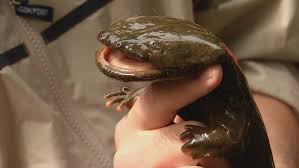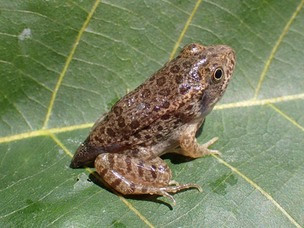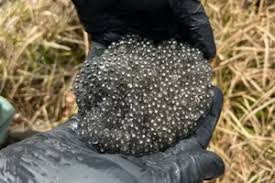
INDIANA – The year 2024 has seen significant advancements in the recovery efforts for two state-endangered amphibian species, the hellbender and the crawfish frog.

Indiana’s hellbender population has been the focus of an extensive recovery initiative. Between 2017 and 2023, 514 young hellbenders were released into the Blue River to supplement the declining population.
This summer, 300 hellbenders were released into the Blue River, and 40 were introduced into nearby Indian Creek as part of a pilot study. This marks the first time an Indiana hellbender release has been conducted outside of the Blue River, allowing researchers to assess the salamanders’ adaptation to a new aquatic environment.

The recovery project has been made possible through a collaborative effort involving the Indiana Department of Natural Resources (DNR), Purdue University, US Fish and Wildlife Service (USFWS), partnering zoos, and other conservation organizations. In a parallel effort, 2024 marked the commencement of a crawfish frog recovery project in southwest Indiana.
The project, funded by federal State Wildlife Grant dollars and the Nongame Wildlife Fund, saw DNR biologists relocating eight crawfish frog egg masses from a significant population in Greene County to Angel Mounds State Historic Site in Evansville. The aim is to re-establish the frog population at this site, which historically housed crawfish frogs before their local extinction in the 1980s.

A habitat suitability study by the Indianapolis Zoo revealed that Angel Mounds still provided a suitable habitat for the crawfish frog. After relocating the eggs, DNR biologists monitored the egg and tadpole development. They observed the successful transformation of young crawfish frogs from the tadpole stage on land near the wetland edge this summer.

Following their dispersal from the wetland, the young frogs will inhabit crayfish burrows to continue their growth and maturation. Reaching adulthood and laying eggs typically takes two to three years. The DNR plans to continue relocating crawfish frog eggs to Angel Mounds to bolster the population, with the Indiana State Museum playing a crucial role in the project.
This progress in the recovery efforts of Indiana’s endangered amphibians demonstrates the dedication and collaboration of various stakeholders and research institutions. Continued monitoring and support will be essential in sustaining and expanding these positive developments to conserve these vital species.







.png)











